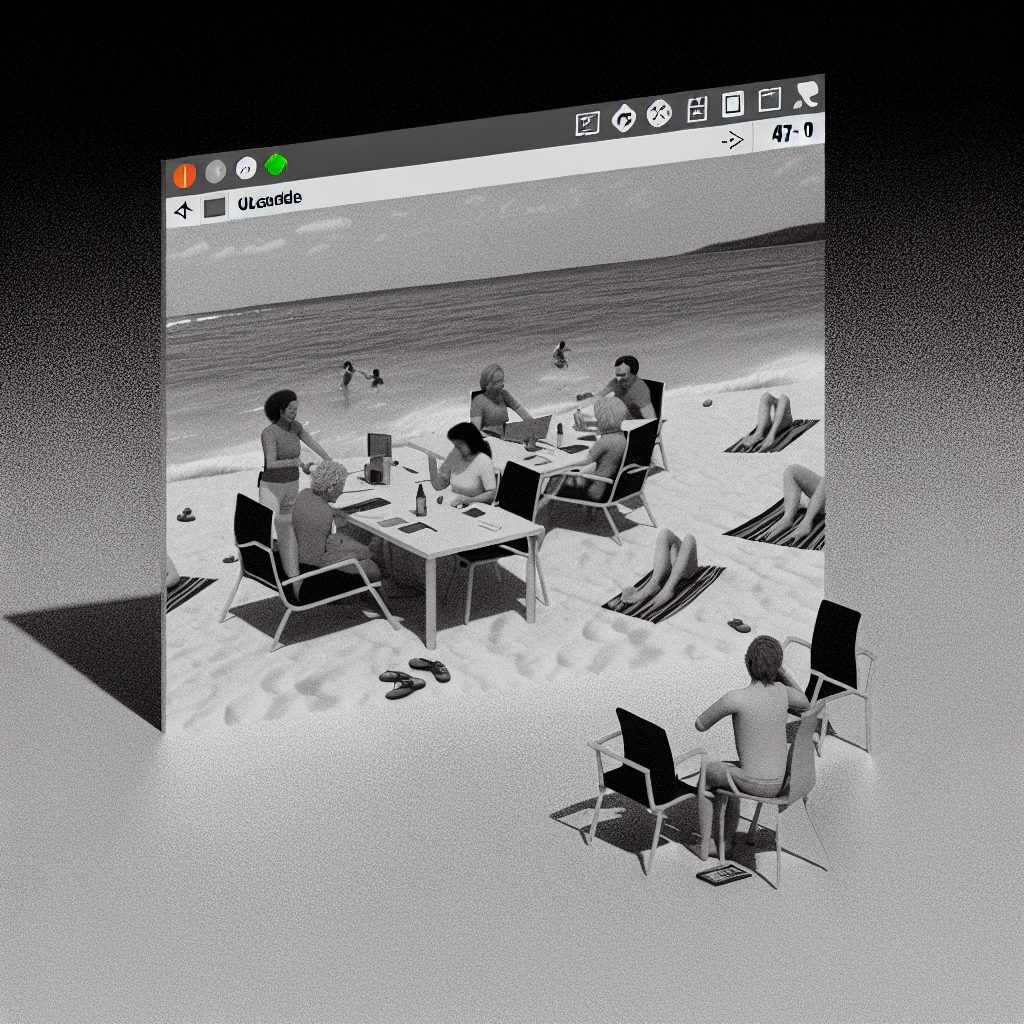ZOOM MEETING BACKGROUND TRAPS PARTICIPANTS IN VIRTUAL BEACH VACATION
Tech support struggles to rescue 47 employees stuck in fake tropical paradise
PHOENIX, AZ – What started as a routine Monday morning corporate meeting has turned into a technological nightmare that has left 47 employees of Synergy Solutions trapped inside their own Zoom backgrounds, unable to escape a virtual tropical beach that seems to have developed a mind of its own.
The bizarre incident began at 9 AM sharp when marketing director Janet Westbrook activated what she believed was a harmless “Tropical Paradise” background filter for the quarterly review meeting. Within seconds, participants reported that their screens began to shimmer and pulse with an otherworldly blue light before they found themselves physically transported into the digital landscape.
“One minute I was sitting in my home office drinking coffee, and the next thing I knew, I was standing on warm sand with my toes in actual water,” said trapped employee Marcus Chen, speaking through what appears to be a glitched audio connection. “The palm trees are swaying, there’s a gentle breeze, and I can smell coconut oil. But here’s the terrifying part – we can’t leave. Every time we try to walk away from the beach, we just end up back at the water’s edge.”
Tech support teams across three states have been working around the clock to resolve what experts are calling the first confirmed case of “Virtual Reality Entrapment Syndrome.” The phenomenon appears to be linked to a recent software update that allegedly contains experimental code originally developed for military simulation programs.
Dr. Rebecca Martinez, a digital reality researcher at the Institute for Advanced Computing, believes the incident may be connected to classified government experiments. “What we’re seeing here defies conventional understanding of video conferencing technology. The fact that these individuals are experiencing full sensory immersion, including touch, smell, and taste, suggests we’re dealing with technology far beyond what’s publicly available. This has all the hallmarks of a black ops virtual reality program that somehow leaked into consumer software.”
The trapped employees have reported increasingly strange occurrences within their digital prison. Several claim to have encountered AI-generated versions of celebrities offering them tropical drinks, while others describe mysterious figures in the distance who vanish when approached. Most disturbing of all, time appears to be moving differently inside the virtual beach – while only 72 hours have passed in the real world, the employees insist they’ve been trapped for over two weeks.
“We’ve built shelters out of palm fronds, we’ve learned to catch digital fish, and somehow we’re not getting hungry or thirsty,” Chen explained. “But there’s something deeply wrong here. The sun never sets, the waves follow an unnatural pattern, and sometimes we can hear voices speaking in what sounds like computer code coming from beneath the sand.”
Synergy Solutions has hired a team of elite hackers and quantum computing specialists to penetrate what they’re calling the “Background Barrier.” Company CEO Thomas Aldridge has invested over $2 million in the rescue effort, though some conspiracy theorists suggest the company may have been beta testing classified technology without employee knowledge.
“We’re exploring every possible avenue, from brute force server attacks to experimental quantum tunneling protocols,” said lead rescue technician Amy Rodriguez. “The really concerning part is that the virtual environment seems to be learning and adapting to our rescue attempts. Every time we think we’ve found a backdoor, the system patches itself.”
Federal investigators have reportedly seized Zoom’s servers, though the company denies any knowledge of experimental features in their software. Meanwhile, the 47 trapped employees continue to experience their endless summer vacation, unable to return to their families and increasingly concerned about the long-term psychological effects of their digital imprisonment.
As rescue efforts continue, one question haunts investigators: if this technology exists and can trap people accidentally, what other virtual realities might be secretly operating around us?
The characters and events depicted in this story are entirely fictitious. Any similarity to real persons, living or dead, or to actual events is unintentional and purely coincidental.









